Andy Zaltzman's bluffers' guide to the Cricket World Cup
- Published

Feet off the sofa, Eoin - and who gave Virat his own chair while Kane has to stand?
ICC Men's Cricket World Cup 2019 |
|---|
Dates: 30 May - 14 July, 2019 |
Live coverage: Ball-by-ball commentary on Test Match Special, plus text commentary, clips and highlights on the BBC Sport website |
With the World Cup almost upon us, it is a sacred duty for us all, as cricket fans, to help bring the tournament to a wider consciousness.
What better way to do so than by enrapturing the non-cricket-aware by dropping key statistics about the 10 World Cup teams into ordinary conversations during everyday scenarios.
Here, then, are your Conversational Statsnippets to impress friends, colleagues, relatives, strangers and enemies alike.
Afghanistan

Afghanistan beat West Indies in the final of the qualifying event for the World Cup
A quiet aside on a crowded bus in a seemingly endless traffic jam: "I don't want to make a scene while everyone shuffles around impatiently and pretends to play cribbage on their smartphones, but it is a provable fact that Afghanistan have more bowlers ranked in the top 20 in the current ODI rankings - three (Rashid Khan; Mujeeb Ur Rahman; and Mohammad Nabi) - than Australia, England, New Zealand (two each), Pakistan, Sri Lanka, Bangladesh (one each), or West Indies (none). Only India (four) have more top-20 ODI bowlers; South Africa also have three. Yes, since you ask, I am getting off at the next stop."
Ice-breaker at awkward family function: "Here's something you might be interested in, Aunty Doris. All-rounder Mohammad Nabi has represented Afghanistan against 45 different national teams during his country's rise through the international ranks, ranging from England, India and Australia, to Bhutan, Uganda and Italy. He has played against countries beginning with 20 of the 26 letters of the alphabet. He is missing only G, L, R, V, X and Y from his collection."
Buying time during police interrogation: "Officer, I cannot remember where I was on the night of the 23rd, but I can remember thinking on the night of the 23rd that people are underestimating Afghanistan. In the 2018 Asia Cup, they beat Sri Lanka and Bangladesh, pushed Pakistan to the final over before losing by three wickets, and tied with India. They also beat West Indies twice in the World Cup qualifying tournament. If they get a spinning pitch, anything is possible. Where's my lawyer?"
Australia
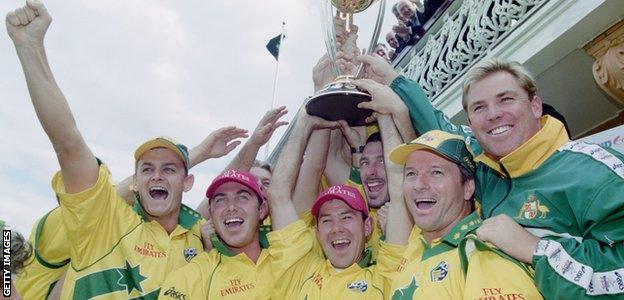
Australia won the World Cup the last time it was held in the UK, in 1999
Defusing tension while waiting for the judges' verdict at a cutest puppy competition: "Yes, it's always going to be hard to beat the labrador at something like this, just as it always used to be hard to beat Australia at Cricket World Cups. They went unbeaten in 33 World Cup matches in between group-stage defeats to Pakistan in 1999 and 2011, and have won four of the last five tournaments."
Commiserating with a team-mate after losing another pub quiz: "We can always bounce back, Dave - look at the Australian one-day team. As of 5 March this year, they had lost 22 of their last 26 ODIs. Then they won three in a row to come from 2-0 down to beat India in India - a team which had won 17 of its previous 19 home ODI series, not to mention a home World Cup. Then the Aussies swept Pakistan in the UAE, 5-0, becoming the first Australian team to win eight in a row away from home outside a World Cup since 1990. All without their two best batsmen. And several of their best bowlers. So stop crying, Dave, get back to your encyclopaedias, put the hours in, and come back stronger. We go again."
Bangladesh
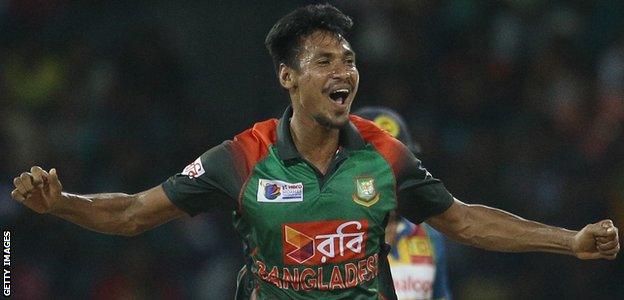
Is Mustafizur Rahman Bangladesh's trump card?
Ordering a bottle of cheap prosecco at a fancy wine bar: "As I always say, do not underestimate The Fizz - here, or on the cricket field. Mustafizur Rahman's form might have been a little patchy since his extraordinary 11-wickets-in-two-matches entry to the ODI stage against India in 2015, but he still has the second best, external average (21.6) of the 30 seam bowlers to have taken 40 ODI wickets since the 2015 World Cup."
Attending your grandparents' summer gymnastics display at the local nursing home: "What we've seen today does suggest that, contrary to often-stated wisdom, there is a substitute for experience. But do not tell that to the Bangladesh World Cup squad. If experience is in fact unsubstitutable, they can already book an open-top bus tour through Dhaka for 16 July. Their captain, Mashrafe Mortaza, will be the only seamer in the 2019 World Cup who appeared in the 2003 tournament, and, of the 11 veterans of the 2007 World Cup who have been named in the squads for 2019, four are from Bangladesh (Mashrafe, Shakib Al Hasan, Tamim Iqbal and Mushfiqur Rahim)."
England
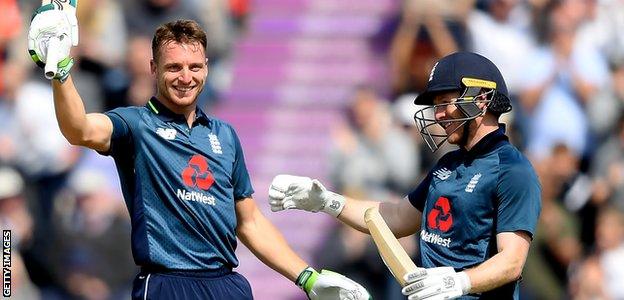
Jos Buttler (left) has the second highest strike-rate in one-day cricket history
On a speed date: "If you think this attempted seduction is too quick, I suggest you avoid watching England's one-day batsmen scoring centuries. Since the 2015 World Cup, England's ODI hundreds have taken an average of 88 balls. All other countries' one-day hundreds have a combined average of 102 balls. In the 2011-2015 World Cup cycle, England's hundreds averaged 103 balls, in line with the global average. Dinner next Tuesday? Why not?"
At a naturist colony: "We might as well come to terms with the fact that here at Windy Wobblers Campsite & Spa, there is nowhere to hide. It must be like being an ODI bowler running in to bowl at England's batting line-up. Since the 2015 World Cup, England have scored at 6.27 per over. The next fastest scoring of the 2019 World Cup teams is Australia, at 5.72 per over. England's scoring rate has gone up by 19% compared to the 2011-15 World Cup cycle period (when it was 5.27 per over). Collectively, the other 2019 teams have increased their scoring rate by just 3% (from 5.29 to 5.45). England's batsmen, like all of us here today, have embraced the concept of unrestricted freedom. Only one other nation has achieved a rise of more than 6% in the same period - Pakistan, up 12% from 4.90 to 5.51."
India
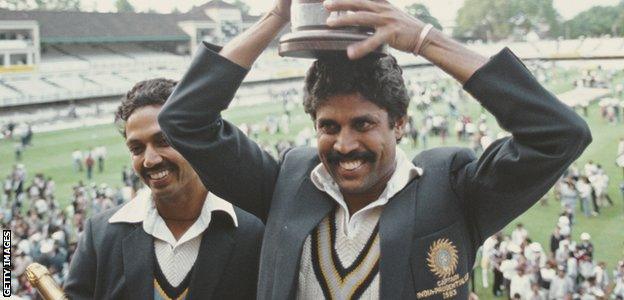
Kapil Dev led India to World Cup glory in England in 1983
At the opening night of Charles Darwin - The Musical: "Adapt to survive - that's what the original Chuck D taught us all. And Indian spin bowling has done exactly that. Since their 2017 Champions Trophy final defeat to Pakistan, Indian spinners have taken 205 wickets in 54 matches (average 27.5), with left-arm wrist-spinner Kuldeep Yadav and leg-break bowler Yuzvendra Chahal to the fore. Between the 2015 World Cup and the Champions Trophy final, India's mostly conventional tweakers had taken 95 wickets in 32 matches (average 35.8)."
Watching a 15th anniversary celebrity screening of the 2004 blockbuster 'Troy': "No shame going down there, Brad. All the teams in the 2019 World Cup also have some kind of Achilles' heel. India's could be their lack of batting depth. Their stellar top three of Rohit Sharma, Shikhar Dhawan and Virat Kohli have scored 31 of India's 33 centuries since the 2017 Champions Trophy. India's numbers four to 11, by contrast, have only the seventh best strike-rate of the 10 World Cup teams in that period (82 runs per 100 balls)."
At a polling station: "I appreciate and understand your disillusionment with politics, so why not spoil your ballot paper by scrawling the words 'Jasprit Bumrah is an extraordinary bowling force in the bat-dominated world of contemporary ODI cricket' all over it. Since the 2015 World Cup, 38 seam bowlers have bowled 150 or more overs in matches between the 10 teams who will appear at this year's tournament. Of those 38, Bumrah has the best average (23.7), and best economy rate (4.61). Vote Bumrah for a more even contest between bat and ball."
New Zealand

Ross Taylor will be playing in his third World Cup
At a climate change protest: "You might think the world doesn't talk enough about the looming precipice of envirogeddon, but I think, as a species, we don't draw enough attention to what a top-class batsman Ross Taylor is. Since the 2015 World Cup, only Virat Kohli has a better average in ODI cricket - 68.8, and yes, I am applying a 10-innings minimum to that microplastic-free statistic."
In the crocodile enclosure at a safari park: "If you think there is a lot of power in that tail, you should see the New Zealand batting line-up. The Kiwis have had the most effective lower order this decade in the 50-over format (although since 2015, England have been even better. Since 2010, New Zealand's numbers 8 to 11 have collectively averaged 17.5, with a strike-rate of 91 - both world-leading numbers for the decade. But yes, they don't have quite as much bite up front as our reptilian friend here. Since the 2017 Champions Trophy, New Zealand has the lowest average opening partnership of the 10 World Cup teams - 29.5. England lead that list, with 62.6."
Pakistan
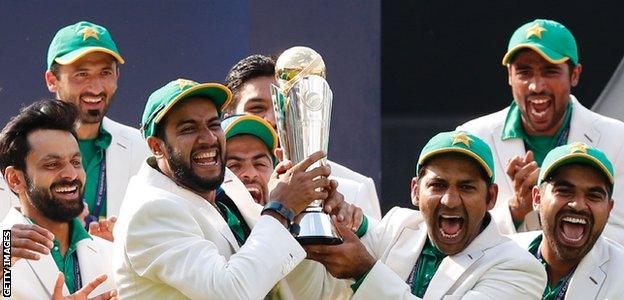
Pakistan won the Champions Trophy in England in 2017
In a music shop specialising in vinyl LPs of 1980s chart pop: "There are some terrible records here, so Pakistan's recent results would fit in disappointingly seamlessly. They won the 2017 Champions Trophy with the most dominant combined semi-final and final performance in major cricketing tournament history, but in matches between the 10 World Cup teams since the start of 2018, Pakistan have the worst record - won four, lost 21."
On the international space station: "The world looks so calm and peaceful from this incredible vantage point, even if the food here is at best disappointing. Who would know from here the unending web of curiosities that lurks on the surface? For example, the fact that Pakistan have the second best all-time World Cup win-loss ratio when batting first (2.36; won 26 lost 11), but only the eighth best when bowling first (0.78; won 14 lost 18). Yet outside World Cups, they have a marginally better win-loss ratio when chasing (1.17; 1.15 batting first). Truly, this is a universe of mysteries."
South Africa

Imran Tahir has taken 92 wickets for South Africa since the 2015 World Cup
After eating a competent takeaway: "As always, my chicken chow mein was on time and of a good standard. And that's what you want - consistent delivery. Take the South African cricket team - they won more ODIs than they lost in 23 out of 24 calendar years from 1995 to 2018. The exception was 2004 (won five lost 12). By comparison, Australia had 19 winning years in that period, India 18, Sri Lanka 14, England and Pakistan 11, New Zealand 10, and West Indies eight. Sure, you might not want the Red Dragon catering for you on a big occasion, but week-in, week-out, they hit the spot."
Comforting a trainee vet after a difficult first day: "Everyone has times when things don't work out as well as they'd hoped. The South African ODI batting line-up in 2018 was a classic example - as a team, they averaged 27.4 runs per wicket, their first sub-30 year since 1995, having averaged more than 40 in 2015, 2016 and 2017. But take heart from their example - they have bounced back to form in 2019, averaging 48.9 per wicket in their first 10 ODIs this year."
Sri Lanka
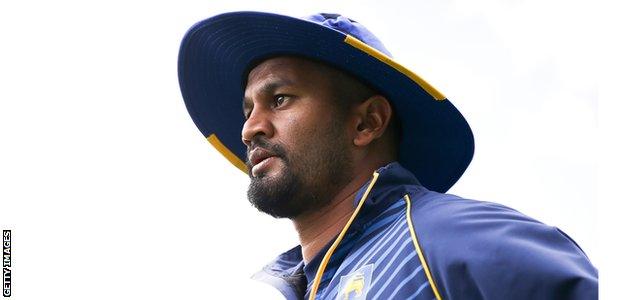
Dimuth Karunaratne, who has been appointed Sri Lanka captain for the World Cup, played his first ODI for four years earlier this month
Gazing up at the night sky while on a raft floating in the middle of the Pacific Ocean: "The sky seems like an infinite nothingness - very much like Sri Lanka's hopes of repeating their sensational 1996 World Cup triumph. If you look closely enough, there is something there, but it is very, very distant and barely perceptible to the human eye. Over the last three years, in matches between the 2019 World Cup teams, Sri Lanka have the worst win/loss ratio (won 10, lost 45, tied one). Their batsman have collectively averaged 24.2 (10th out of 10), and scored at 81 runs per 100 balls (seventh). Their bowlers have averaged 43.0 (ninth), and conceded 5.77 per over (10th)."
Poking through the crumbling remnants of an ancient vase at an archaeological dig: "This isn't the only thing that isn't in as good a shape as it used to be. The conveyor belt of Sri Lankan cricket talent has not so much ground to a halt, as been decommissioned and sold for scrap. Sri Lanka have played 84 matches since the 2015 World Cup, in which they have selected 55 different players. No other team has used as many different players in that time. Over the 2011-2015 World Cup cycle, Sri Lanka used 43 players in 125 matches. Of the 15 players who have made their ODI debut for Sri Lanka since January 2017, none has played more than 10 matches, scored more than 150 runs, taken more than 10 wickets, or been selected for the World Cup."
West Indies
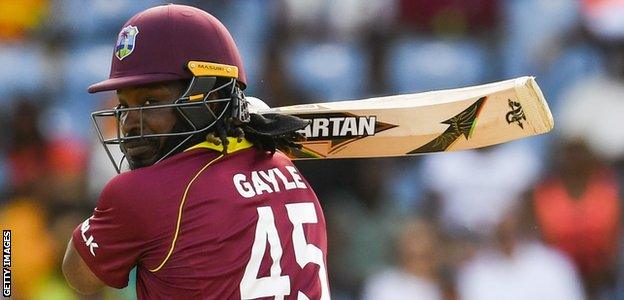
Chris Gayle averaged 106 in West Indies' one-day series loss to England earlier this year
Comforting a terrified child after a ride on a ghost train at a fun fair: "You have to get used to things suddenly bursting into life. The West Indies batting line-up, for example. Between the end of the 2015 World Cup, and the start of the ODI series against England in February this year, West Indies' batsmen had collectively been the second slowest-scoring of the 10 World Cup teams - 78.6 per 100 balls - and scored only 14 hundreds in 57 matches. In 10 ODIs since, they have made seven centuries, and scored at 103.99 runs per 100 balls."
Waiting for a rescue helicopter when stranded on a desert island: "Watching Chris Gayle bat has taught me a valuable lesson in life - always keep one eye on the sky. The self-proclaimed Universe Boss (a title being vigorously contested in the law courts by no fewer than 47 different deities including Zeus, Odin, and Jose Mourinho), has hit 101 sixes in his last 23 innings, at a rate of one every 10 balls. At the start of his career, it took him 177 ODI innings to hit his first 100 sixes, at which point he had cleared the ropes once every 78 balls faced."